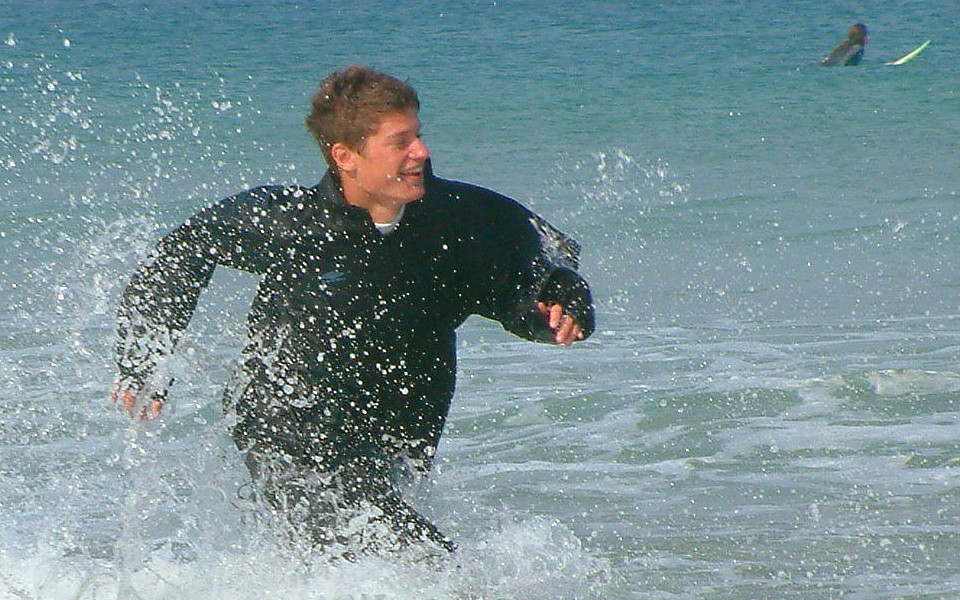Watersport Clothing Advice
In this section we share a few tips on how to get the most out of your watersports kit.
There is a lot of jargon in the fashion industry. Can you tell your anoraks from your cagoules, gilets, capes, ponchos, parkas, overalls, and various sportswear? Do you know why hoods are so useful? Any clue what causes a "Wet Out" ?
We intend to clarify this here.
Secrets of the Rainwear Industry
Does it matter that your rain suit is keeping you dry from rain if you end up soaked from your own sweat? The foremost dirty little secret in the outdoor industry is that rain gear won't keep you dry.
It makes little difference if you buy a high-end €400 Gore-Tex parka or wear your hoodie, they'll both wet out in continuous rain and leave you soaking wet, some sooner, others later. If the weather is warm that may be acceptable, but not when it is cold.
Leakage
Manufacturers don't consider it leakage when moisture intrusion is in the range of edge seams, zippers and pocket parts, or pressing through moisture under mechanical stress, like from a backpack or bike saddle.
Durable Water Repellent (DWR)
Another dirty secret in typical waterproof products is that light abrasions, dirt, and even body oils degrade the DWR, especially when the jacket is wet, which sort of defeats the purpose of having a rain jacket that you can actually wear outside. The DWR coating must be maintained and retreated to avoid soaking through.
The other issue is that, once soaked through, this multilayered approach to rainwear restricts breathability and quickly becomes clammy. You've probably been there before. The jacket is soaked and it feels clammy and uncomfortable next to your skin.
A smarter alternative is to wear soft fleece clothes
under a thin, loose fitting anorak or cagoule and matching pants.
The fleece keeps you warm and wicks some of the moisture away.
The outer shell keeps most of the wind and rain out.
Occasionally shake it to ventilate a bit.
More Rainwear Secrets
- Rain clothes will not keep you dry in 100% humidity.
Sweat from inside can't evaporate.
It's called a "wet out".
But rainwear helps you stay warm however by avoiding windchill,
as long as you're moving and generate body heat.
- It’s possible to get hypothermia in surprisingly warm weather.
Learn to recognize the early signs of hypothermia in yourself and your companions,
such as the "umbles" (fumbles, grumbles, mumbles, and stumbles).
Stay well hydrated. Keep moving and eating.
- Wear a few layers in cooler weather,
especially if the waterproofing on your rain gear has worn away
or you're only wearing a base layer underneath and it’s soaked.
Adding a mid-layer will prevent the cold conducting from your rain jacket to your skin.
- A billed cap will keep rain off your glasses and out of your face.
- Prevent chafing.
Wear long synthetic or wool boxer jocks.
Carry aloe vera gel or zinc oxide to soothe irritated skin between your legs and butt cheeks.
- Wear hiking footwear that drains fast and dries quickly.
Avoid shoes with a waterproof liner because they take a very long time to dry when they get wet.
Mesh fabric drains quickly and dries fast.
Leather dries the slowest and should be avoided.
- If you are backpacking, let your feet dry completely out at night. Snuggle up to your friend in a tent and listen to the rain drops fall.
Getting the hang of all of these techniques, dialing in your own system,
and validating it in different temperatures takes a surprising amount of practice,
but pays dividends when you need it.
Dress for Immersion
It is important to dress appropriately for any sport you participate in. Proper attire can keep you safe and comfortable. Consider the location and weather conditions before you choose your outfit.
Cold Water
- Wetsuit
- Anorak or Cagoule as Windbreaker (worn over the wetsuit)
- Kite pants (worn over the wetsuit)
- Neoprene boots
Cool Water
- Thermal base layer instead of wetsuit
- Fleece mid layer
- Anorak or Cagoule as windbreaker
- Kite pants or rain pants
- Water shoes and socks
Warm Water
- Swimshirt
- Anorak or Cagoule as windbreaker
- Kite pants, rain pants, or running tights
- Water shoes and socks
Warm Water for Strength Training
- Swimshirt
- Tracksuit or Jogging Suit
- Water shoes and socks
